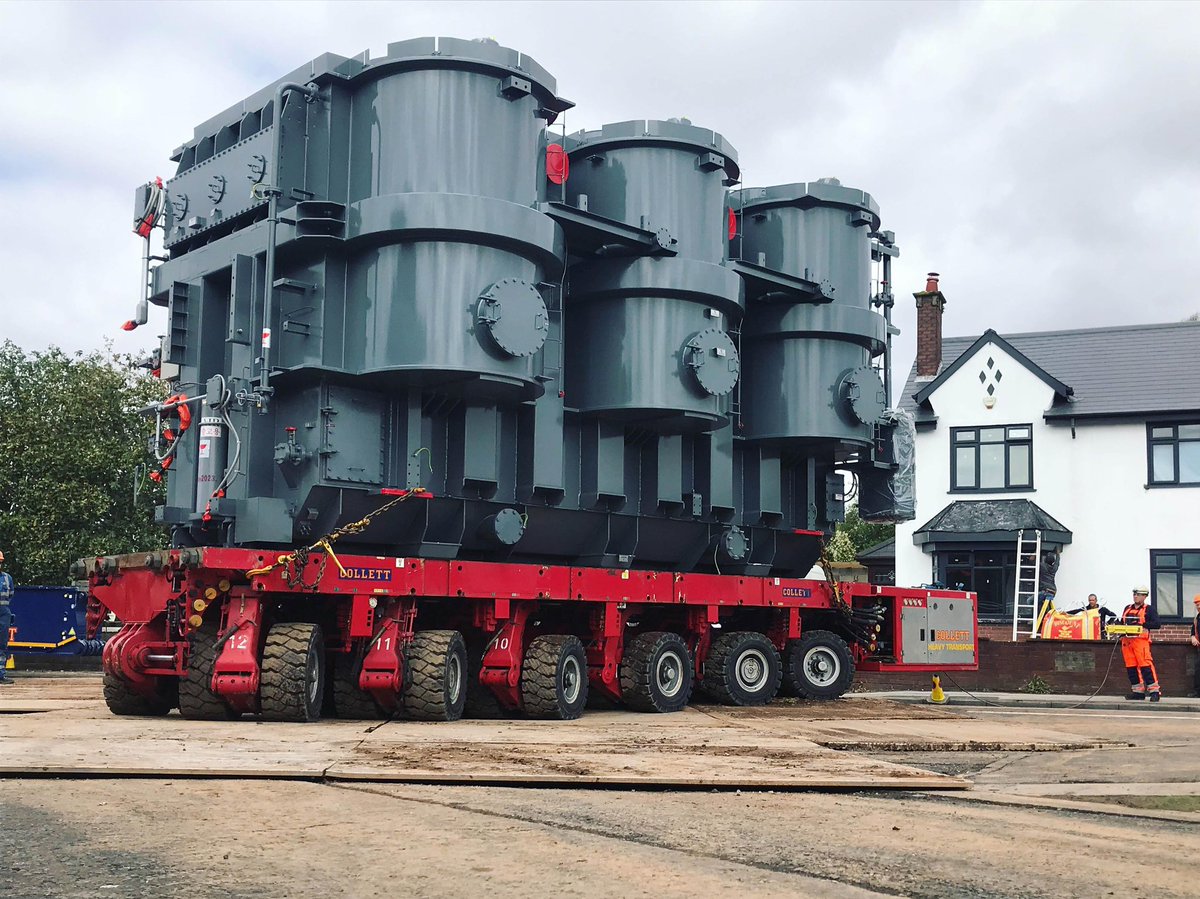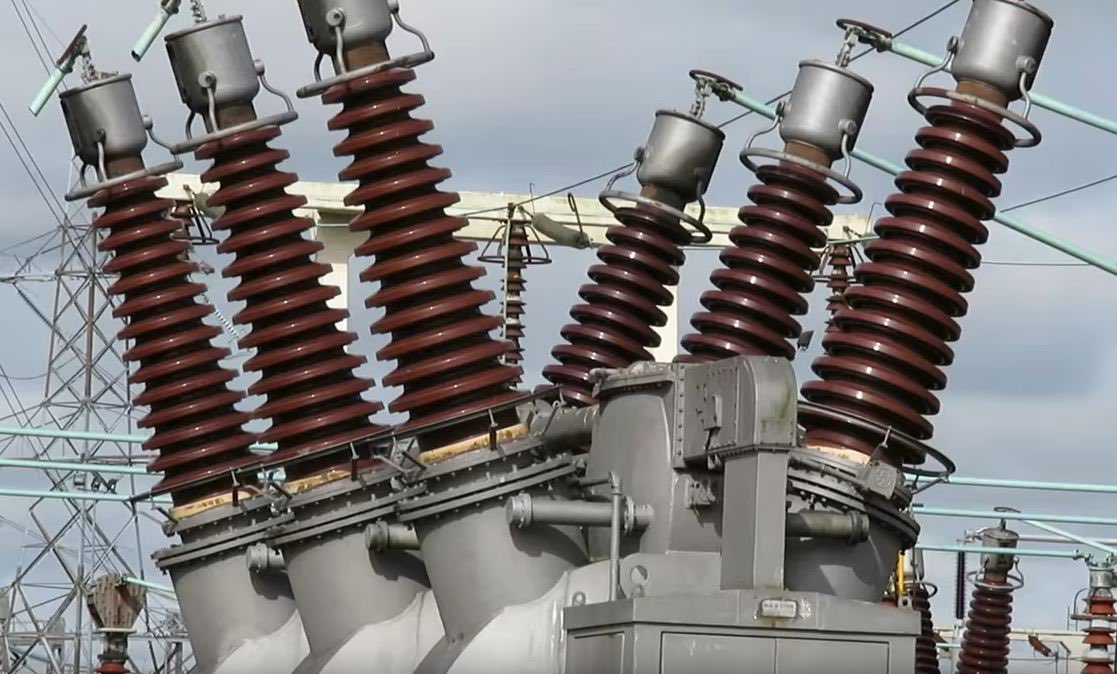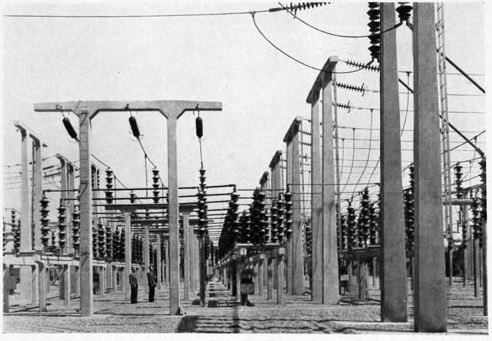
The British Grid of the early 1930s was built to interconnect power stations and establish technical standards for an integrated, synchronous national power system functioning on 3 phase AC 50Hz. It was a huge success 👏🏻👏🏻👏🏻 #BirthOfTheSupergrid [1/36] 

The demand for electricity after WWII was growing rapidly. Britain’s post-war industrial growth depended on reliable energy supplies. By 1950 the (then) 25 year old grid was at capacity. New and larger power stations were urgently needed as well as more transmission lines [2/36] 

Generator sizes grew larger. Castle Donington in the Trent Valley was the first station in Britain to boast 100MW units from a single boiler. The BEA had ambitious plans to build power stations just like Castle Donington all over Britain. Later High Marnham had 200MW 💪🏻 [3/36] 

The ideal sites for these enormous stations were by water and fuel (predominantly coal) hence South Wales, the Midlands and Yorkshire saw concentrations of schemes. The demand for energy was centred on industrial areas e.g. Sheffield, Tyneside, Teesside PLUS the South East [4/36]
The BEA approved plans for higher powered core lines to be ‘superimposed’ on the existing 132kV grid in 1950. The ‘superimposed grid’ would allow bulk power transfer along key strategic routes. The original proposed network is shown below. (Future stations in green) [5/36] 
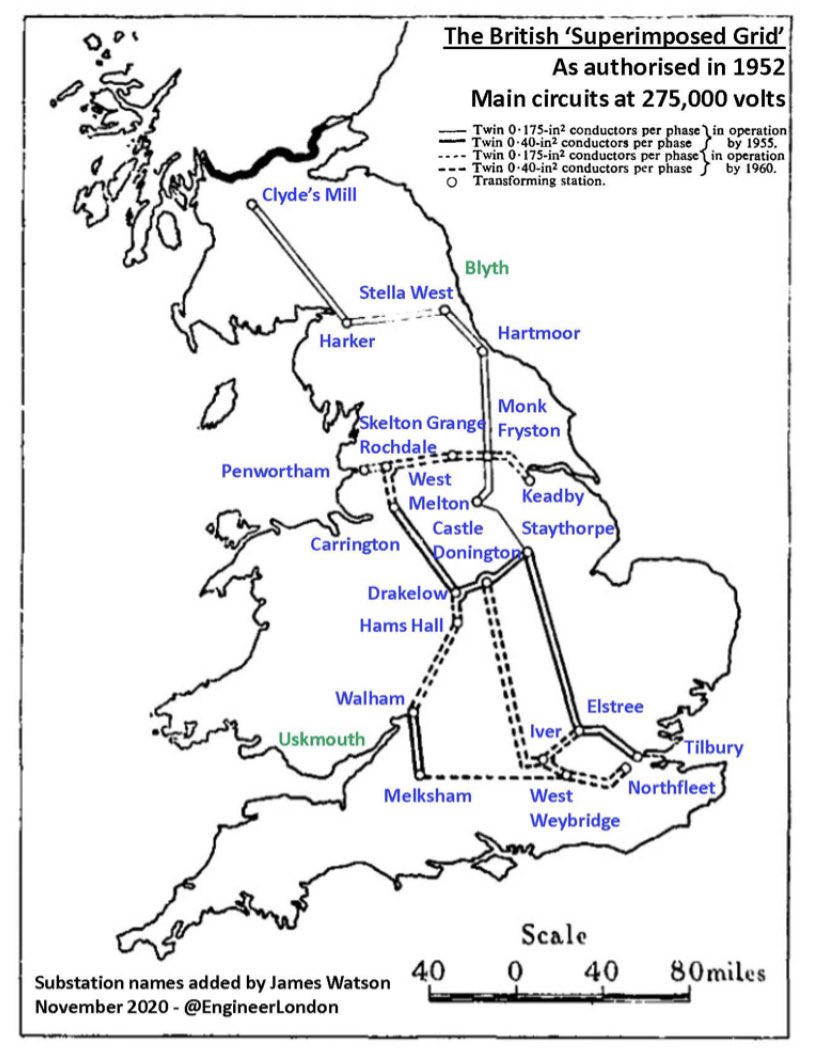
A system of arterial lines linking West Scotland with Tyneside, Yorkshire and Greater Manchester then picking up the mighty power stations on the Trent before connecting to North and West London via Birmingham and Wiltshire - #BirthOfTheSupergrid [6/36] 

The new SUPERGRID was to have sufficient capacity to make transporting electricity more economical than transporting coal. Upping the voltage from 132kV was cheaper and more productive than uprating those existing circuits in power terms (tower strength, conductor weight) [7/36]
They DOUBLED the voltage to 264kV. Seen as a HUGE leap forward 😱 An experiential line from Staythorpe to West Melton was erected and initially energised at 132kV with a view to running at 264kV as soon as they dared to...😬 [8/36] 
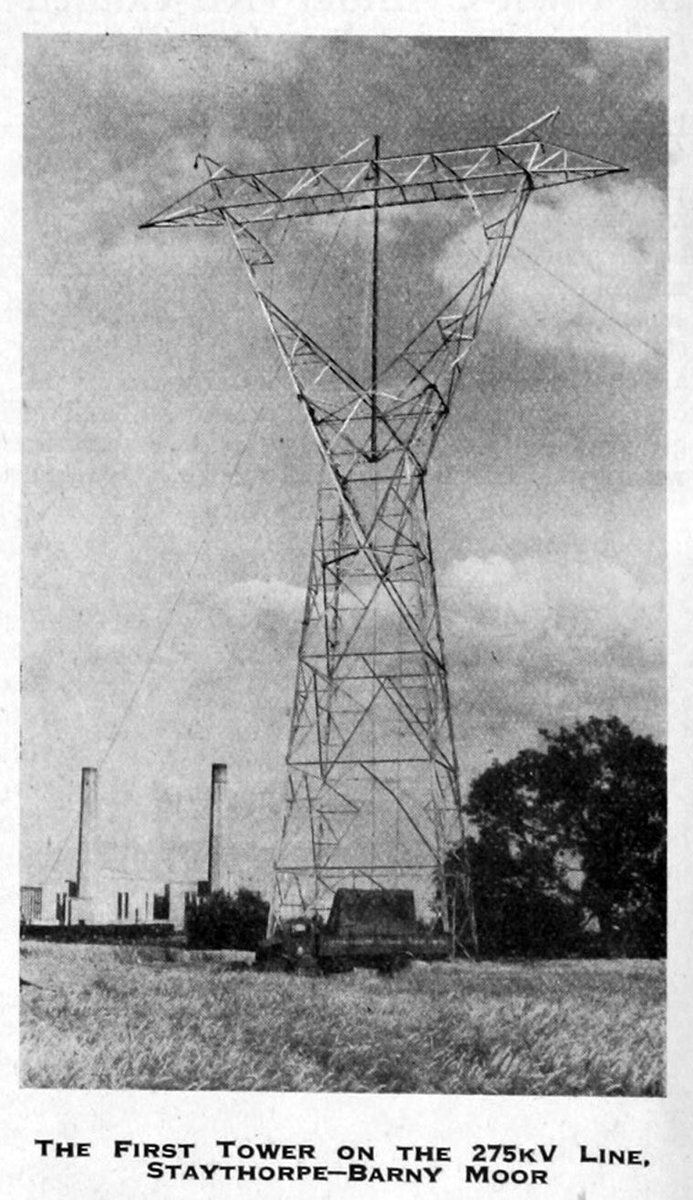
Discussions at the IEC proposed new standard equipment ratings of 300kV and in typically British style the BEA engineers added 11kV to 264 and arrived at 275kV NOMINAL, to work on equipment ultimately rated for 300kV continuous. (We still buy 300kV kit today 💁🏻♂️) [9/36]
Two 120MVA 275/132 auto transformers were procured (just one would have been pointless 🤣) This English Electric unit weighs 164 tons when fully assembled. This was on the limit of practical transport in 1953 🏋🏻😬 Made in Stafford 🇬🇧 [10/36] 
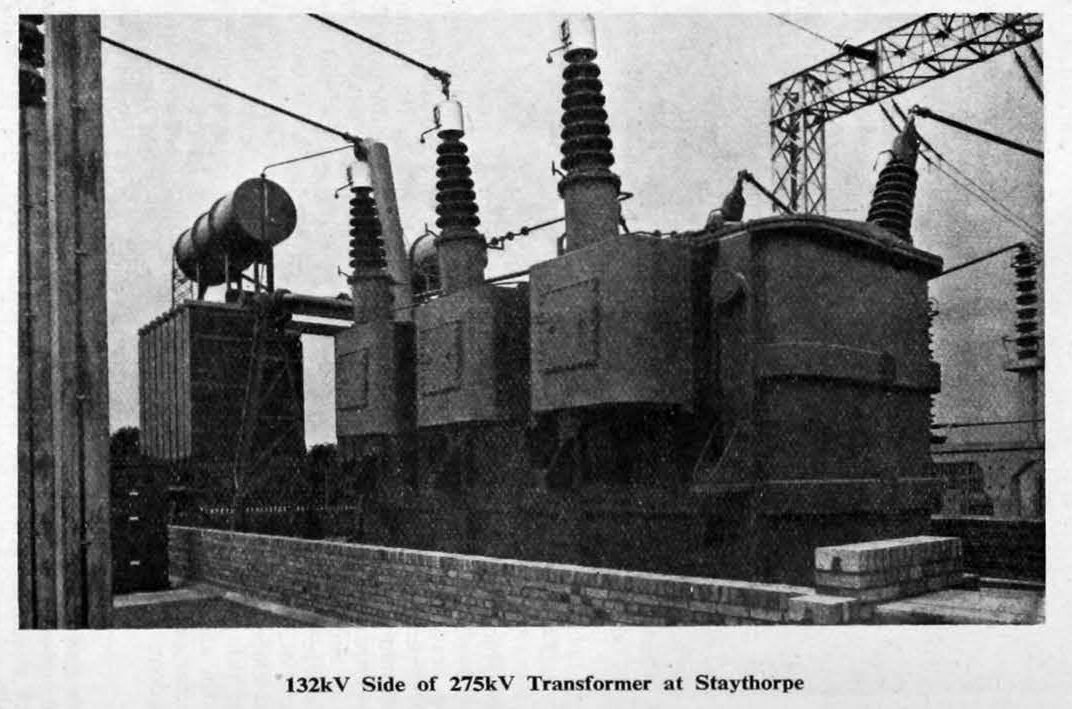
The West Melton transformer was made by BT-H at Rugby. Travelling on the UK roads was a huge logistical challenge. The load was the heaviest piece of electrical equipment moved to that date 🏋🏻 #BirthOfTheSupergrid [11/36] 
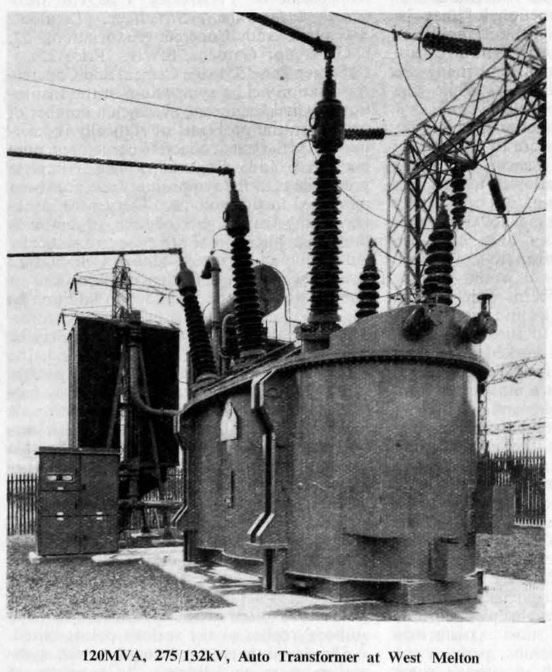
On 15th July 1953, Sir John Hacking, Dep Chairman BEA, presided over the big switch on. He closed a 132kV OCB to charge the 275kV line for the first time. Charging current up to West Melton was 40 amperes. When the other end closed up, it imported 60MW to Staythorpe 👌🏼 [12/36] 

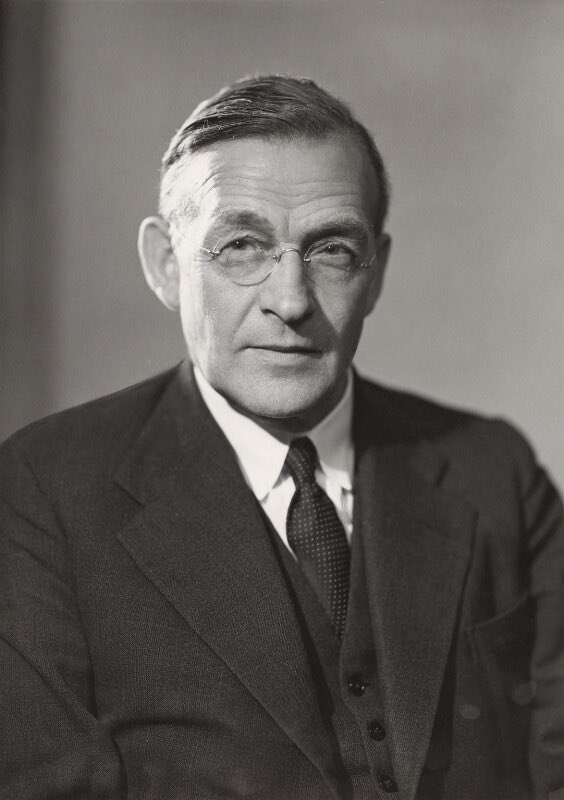

Colonel Leeson, responding for the guests, claimed “the SUPERGRID marks an epoch in electricity supply in Great Britain and in the country’s industrial development” 🇬🇧 The Prince of Wales once switched on one of my circuits- that’s me in the tie with sexy haircut 😉) [13/36] 

The supergrid used ACSR conductors, always dual bundle per phase, of either 0.175 or 0.4 square inch copper equivalent giving ratings of 375 and 570MVA per circuit respectively. One circuit could easily get a full power station’s output away. Nice work lads 👏🏻💁🏻♂️ [14/36] 
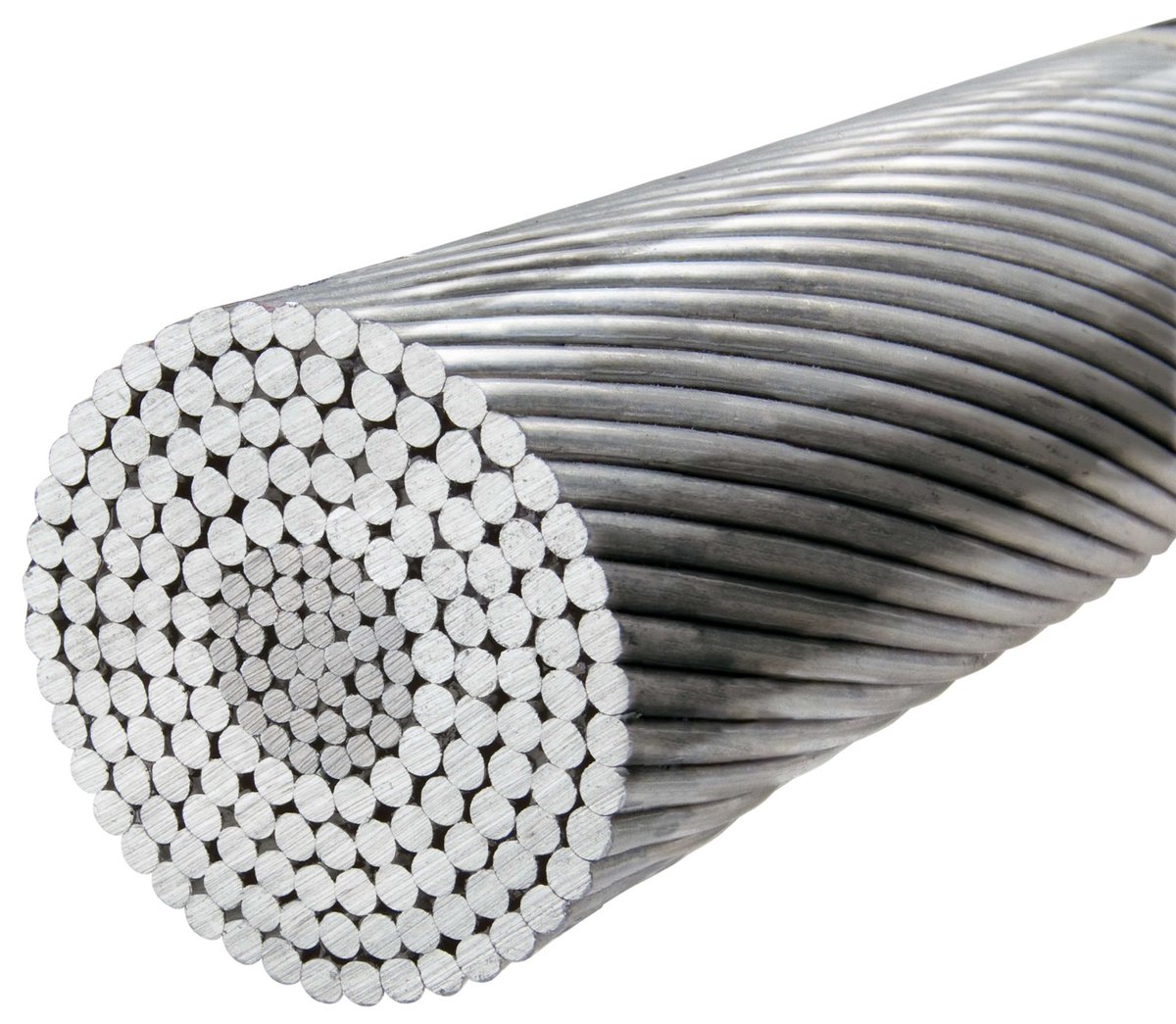
The early L3 tower designs had two basic shape options, both significantly larger than 132 towers by necessity. The conductors were suspended on strings of cap and pin insulators, like the 132 grid but more insulators in the string!! [15/36] 
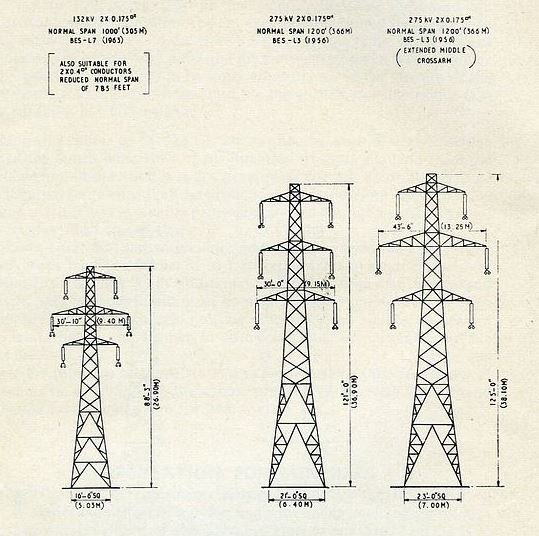
The L2 tower design was selected for the heavier capacity routes and designed to take 400kV as a form of future proofing. L2 towers can work with either voltage but alas can’t handle more than a dual bundle. It is still my absolute favourite tower 😍 [16/36] 

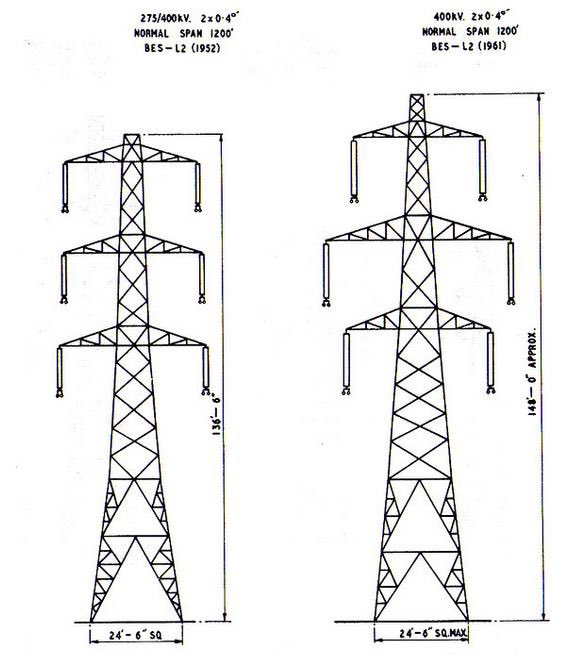
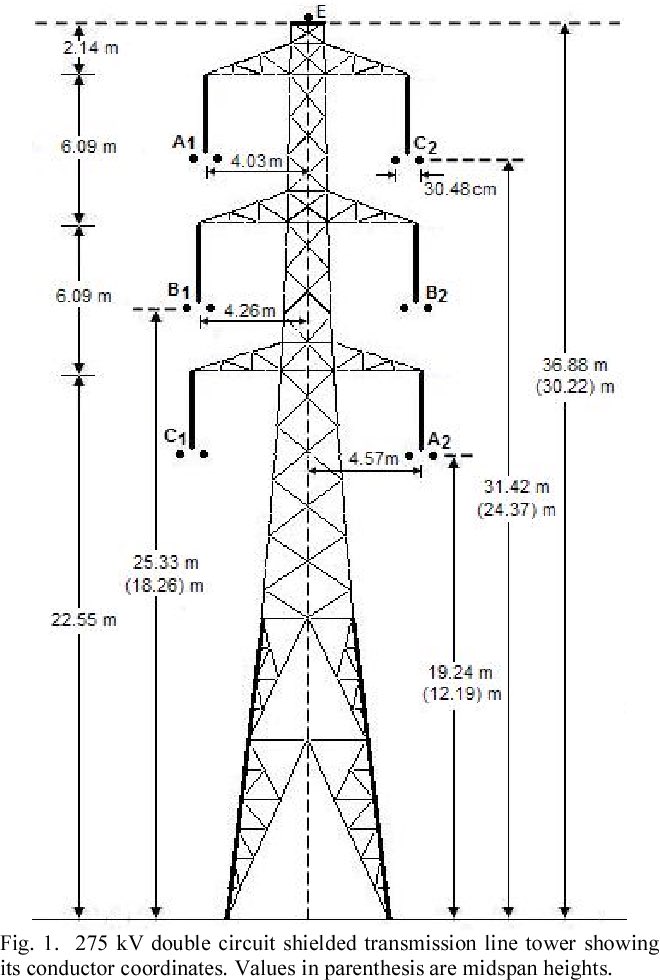
Here’s the experimental tower at Staythorpe which carried the first 275 line vs a 1970s L2. The L2 looks majestic and in my view less imposing and dramatic than the later L6 and L8 beasts for 400kV bundle service [17/36] 

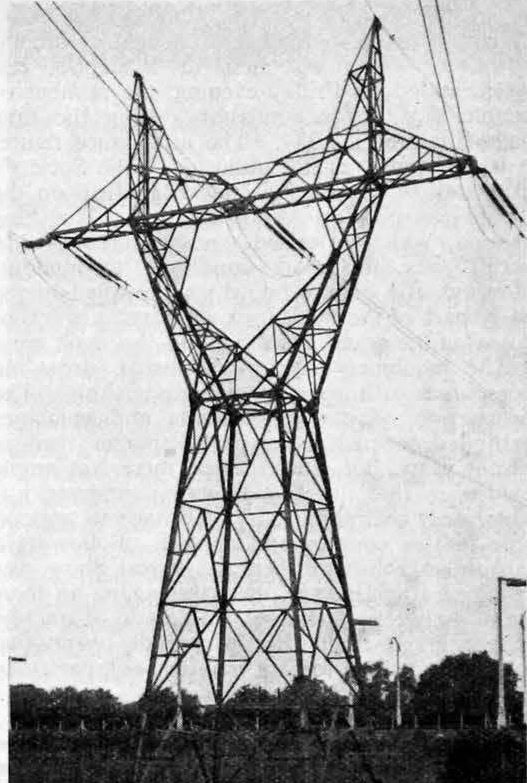
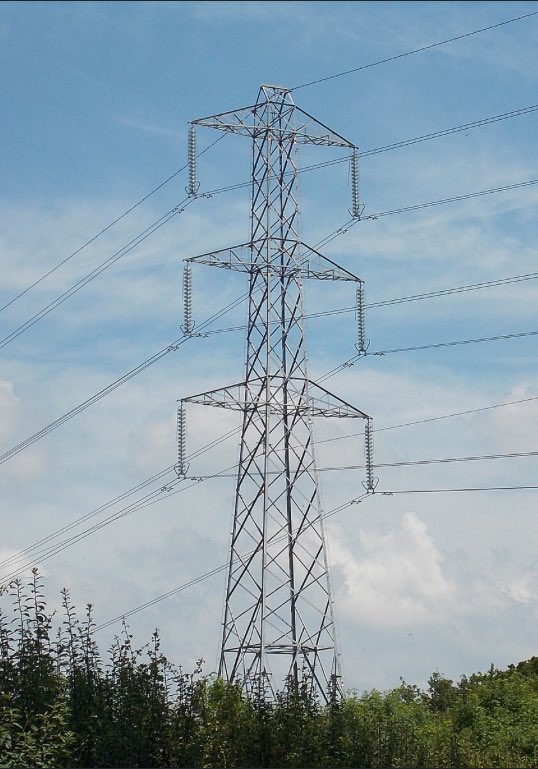
67 years later cap & pin insulators and lattice towers remain ubiquitous. We’ve shifted from ACSR now to AAAC and other secret alloys to give us more capacity than ever! Our preferred 400kV circuit would use a triple bundle conductor where possible. Loads of variations! [18/36] 



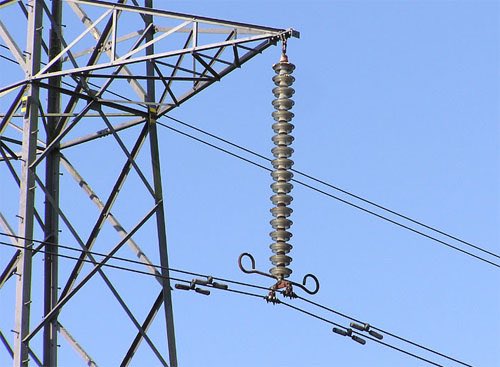
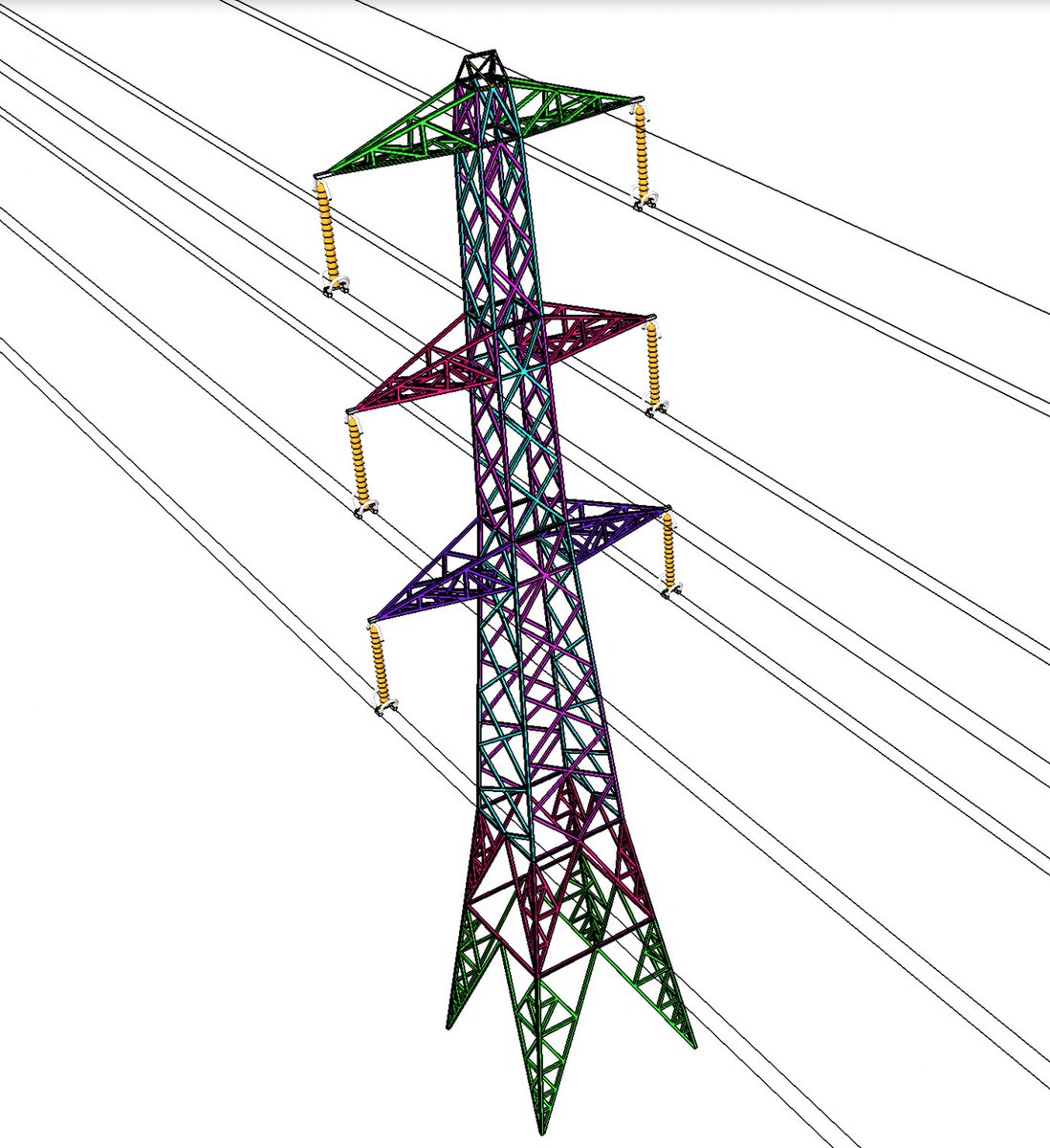


Back to July 53 and Sir John... All this equipment worked at TWICE the highest voltage previously seen. Double the ooomph, double the attitude. What a time to be an engineer. The bushing I found below must have been an experimental prototype. Units in service rated 300kV [19/36] 





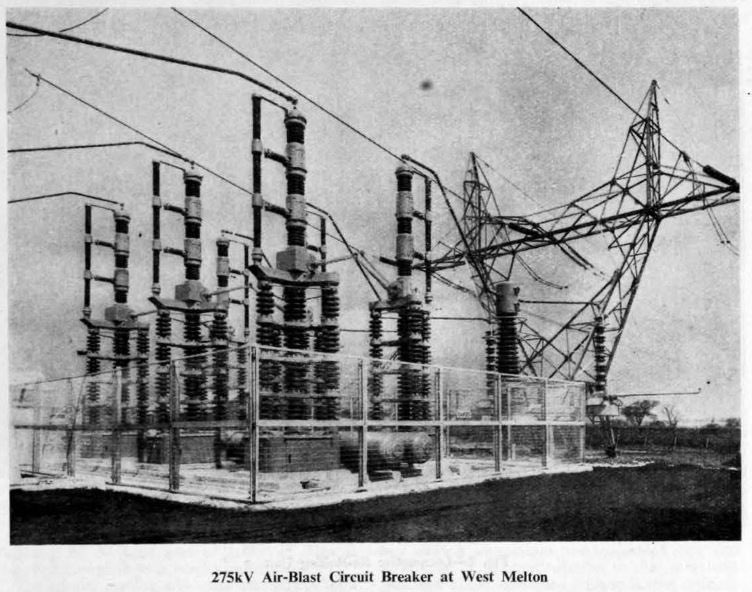
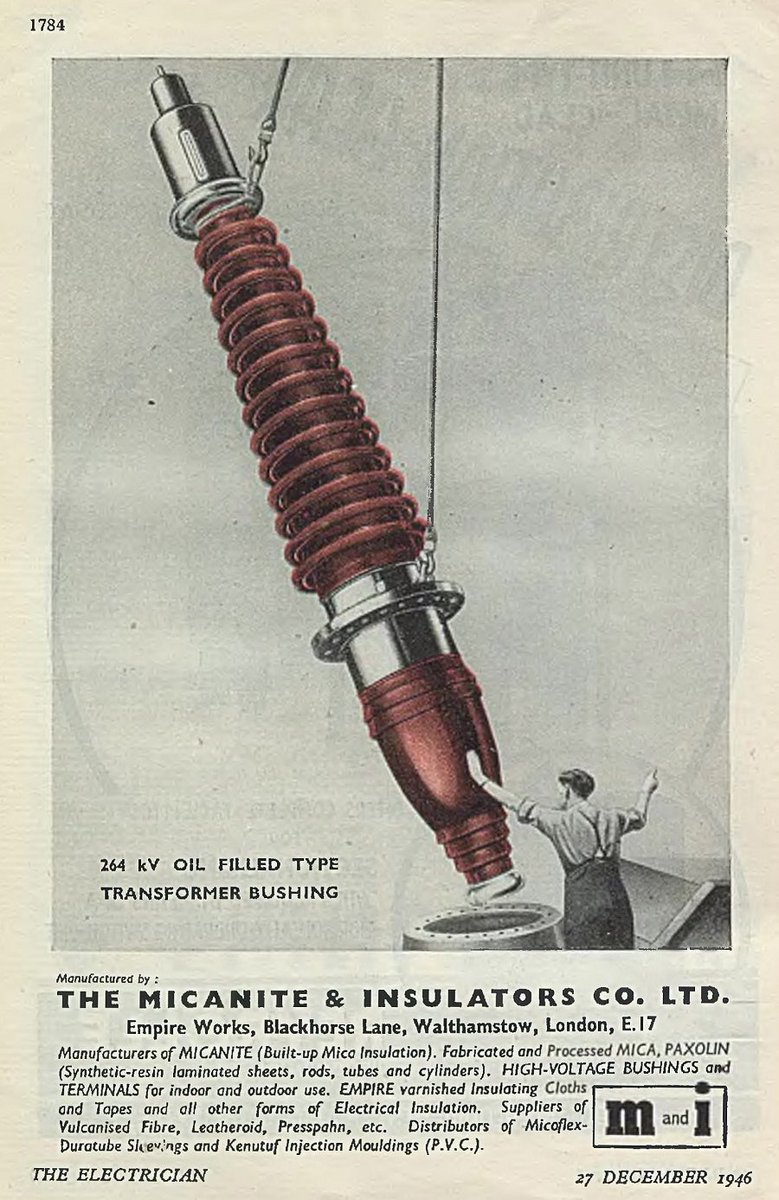
The sheer work that must have been delivered 1953-1960 😳 The massive stations in the Midlands and the very long routes coming all the way down to the Thames estuary. All the switchgear, protection, control etc #BirthOfTheSupergrid [20/36] 



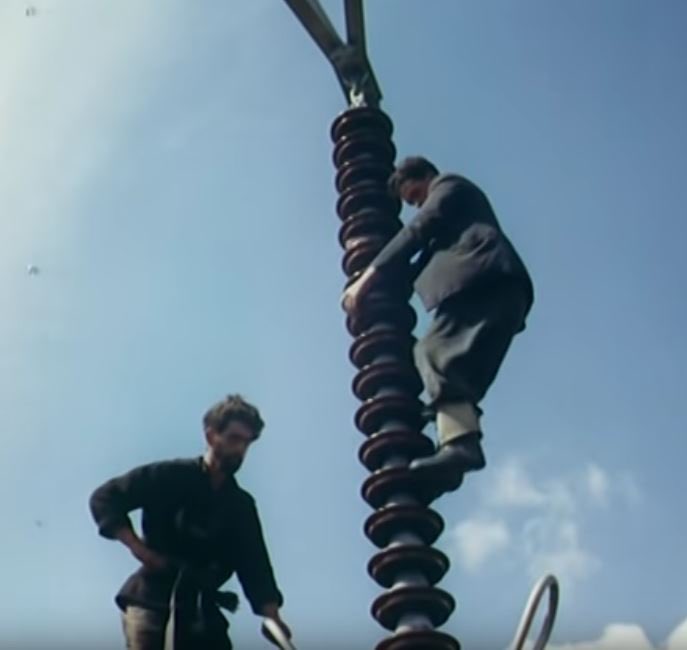
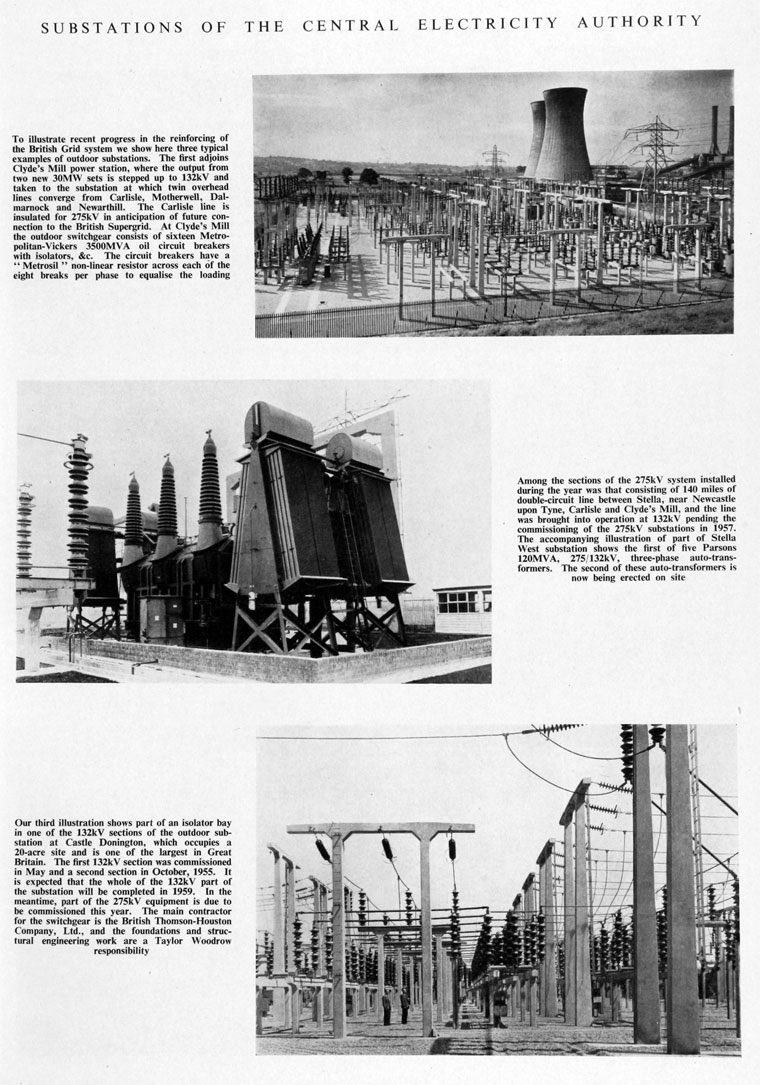
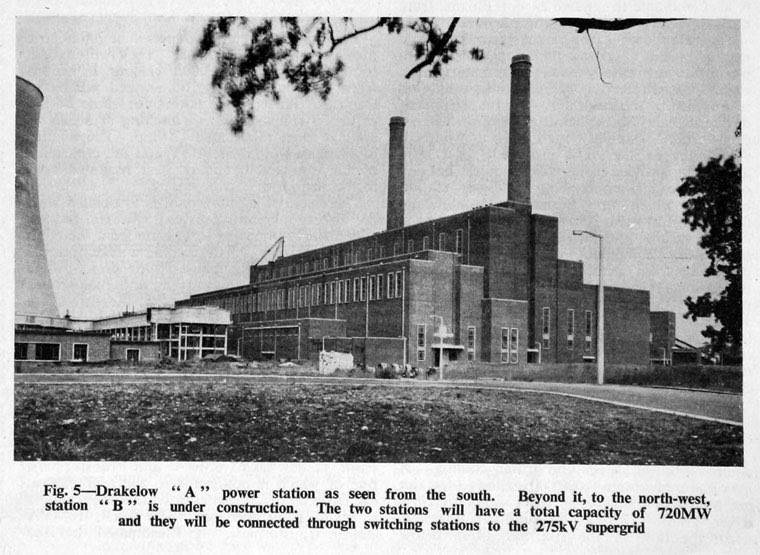

This North East Region focus from 1961 (thanks to @RobBurnett92) shows the ambitious development around Tyneside, Sheffield and Humberside and the multiple routes into the Midlands- anticipating thermal constraints maybe 💁🏻♂️👍 [21/36] 
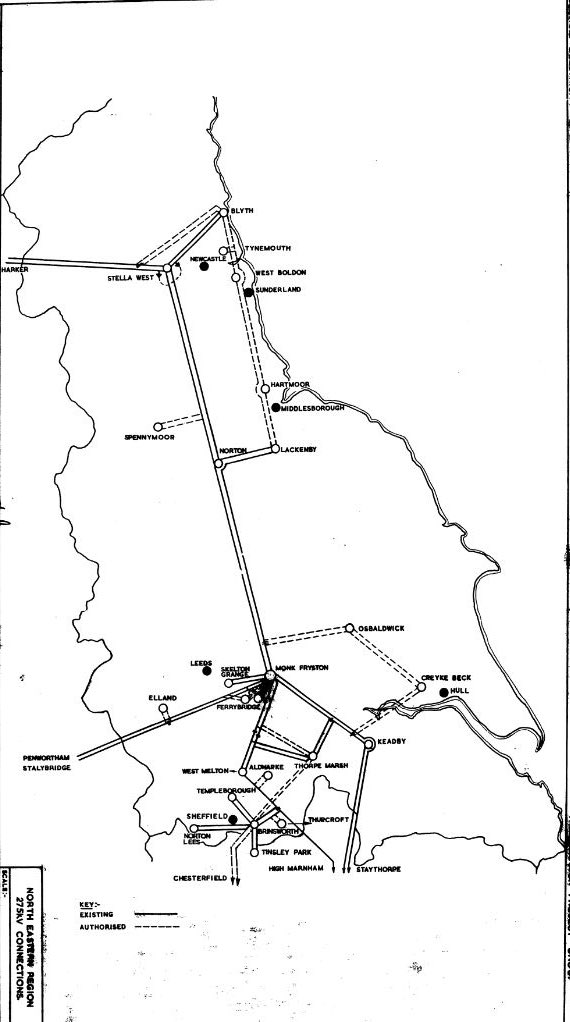
For me it’s still truly amazing to think of 100MW generators at Castle Donington, nr Derby, linking directly to switches at Iver, nr Uxbridge, in West London. I work at Iver regularly. We still find references to the Castle Donington circuit 💁🏻♂️🥰 [22/36] 


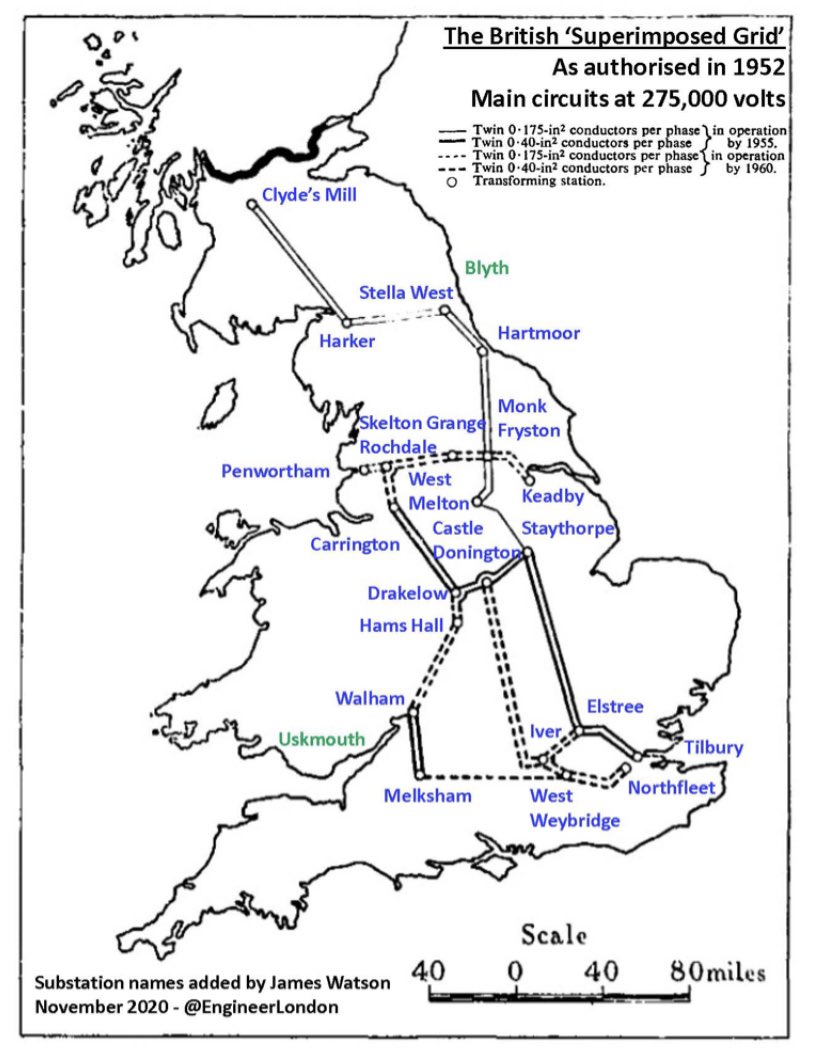
The first 275/132 transformers were 120MVA autos. Soon double wound generator transformers were built, along with 180MVA autos to link to the existing 132 networks. British transformer engineering was truly exceptional 💪🏻🇬🇧🛠⛓🧲 [23/36] 

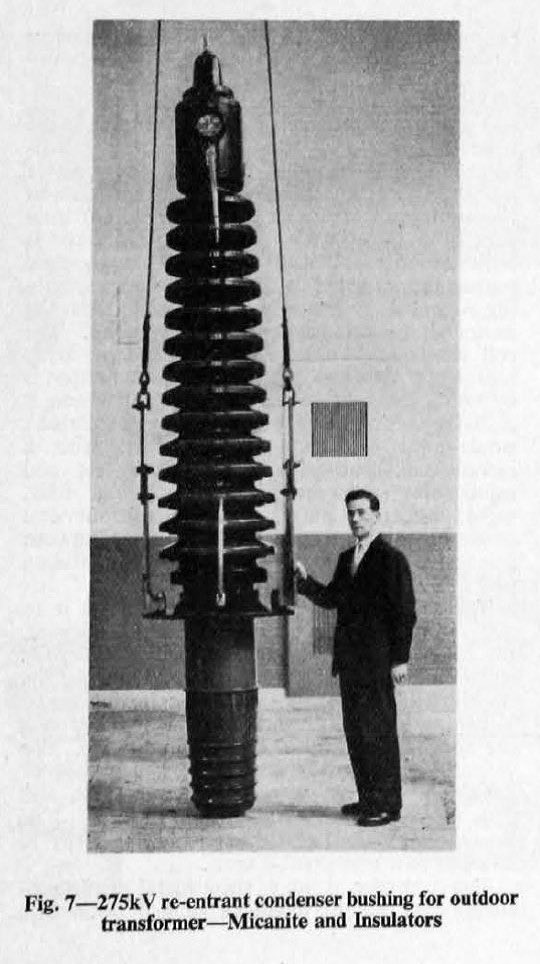

Moving big transformers remains a challenge for us and logistically needs very careful planning. Those early units had a transport mass of 140tons- not too dissimilar to ours today. Standard ratings are now 240MVA (double those of 1953) [24/36] 






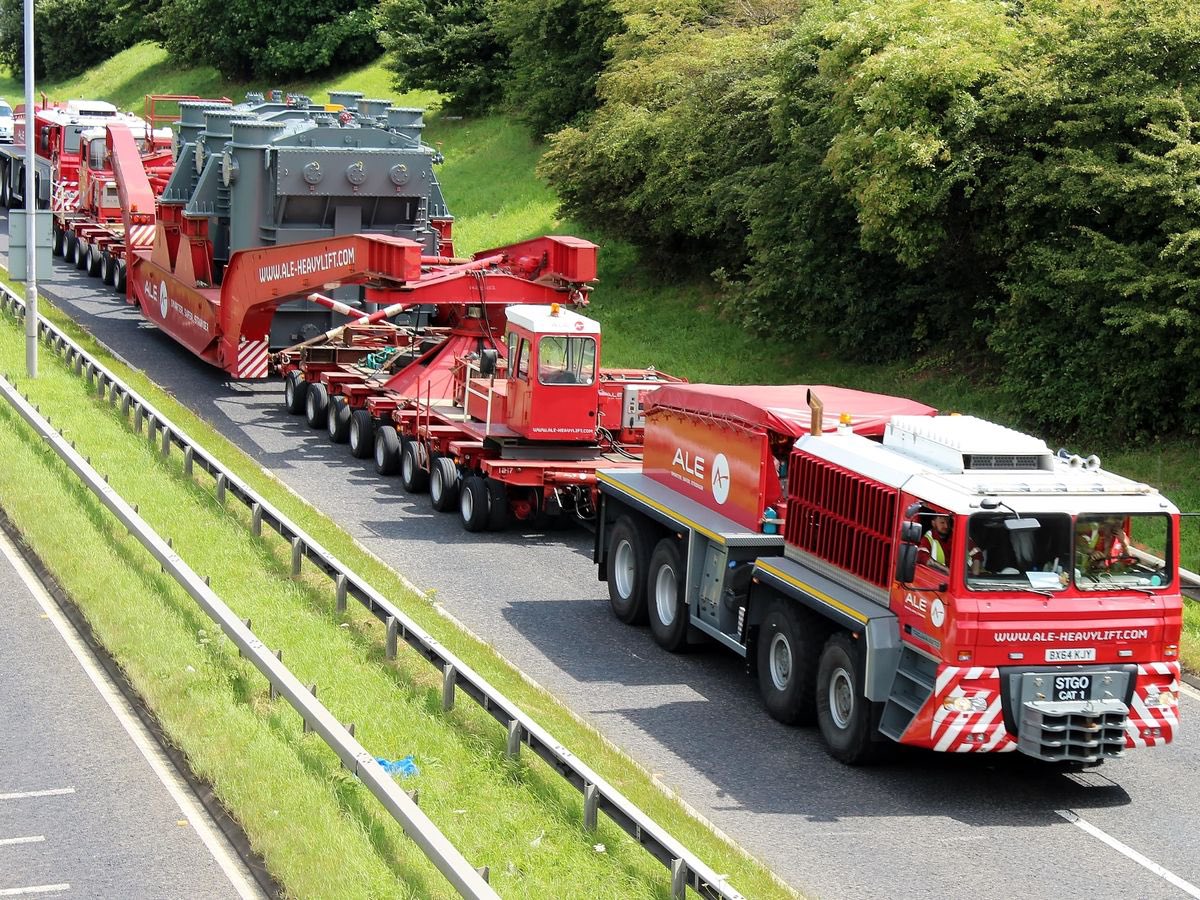
• • •
Missing some Tweet in this thread? You can try to
force a refresh

